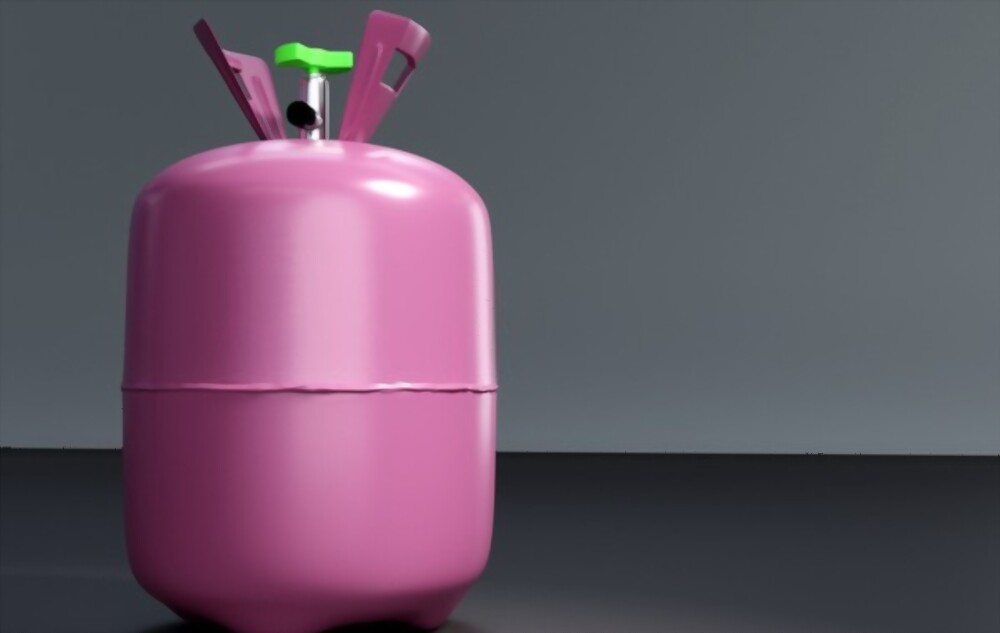Refrigerants play a crucial role in maintaining the desired temperature in commercial and industrial cooling systems. However, certain refrigerants, like R404A, have a high global warming potential (GWP) and contribute to environmental degradation. To mitigate these effects, it is essential to adopt safe practices for handling and managing R404A refrigerant. In this blog post, we will discuss some best practices that will help you handle and manage R404A refrigerant safely and responsibly.
What is R404A Refrigerant?
R404A is a commonly used hydrofluorocarbon (HFC) refrigerant blend, primarily composed of difluoromethane (R32), pentafluoroethane (R125), and 1,1,1,2-tetrafluoroethane (R134a). It is widely used in commercial refrigeration applications, such as supermarket freezers, display cases, and refrigerated transport. R404A has a high GWP, contributing to climate change, and its usage is being phased down due to environmental concerns.
Is R404A Refrigerant Banned?
While R404A refrigerant is not completely banned, its use is being phased down in many regions due to its high GWP. The European Union, for example, has implemented regulations to gradually restrict the use of fluorinated gases, including R404A, through the F-Gas Regulation. It is crucial to stay updated with local regulations regarding the use, handling, and disposal of R404A to ensure compliance and explore suitable alternatives.
Can I Replace R404A with R134a?
R134a is not a direct replacement for R404A due to its different thermodynamic properties. R404A is primarily used in low-temperature applications, while R134a is more commonly used in medium-temperature systems. However, in some cases, equipment modifications and adjustments may allow for limited use of R134a as a substitute for R404A. It is recommended to consult with refrigeration experts or manufacturers to determine the most suitable replacement options based on your specific requirements.
Is R404A Refrigerant Liquid or Gas?
R404A refrigerant is a blend of several components and exists as both a liquid and a gas under different temperature and pressure conditions. At standard atmospheric pressure, R404A is in a gaseous state. However, when subjected to low temperatures and/or high pressures, it condenses into a liquid form. It is important to handle R404A with caution, following appropriate safety procedures, whether it is in a liquid or gas state.
How to Handle R404a?
Educate and Train Staff
Proper training and education are fundamental when it comes to handling any type of refrigerant. Ensure that all personnel involved in refrigerant management receive comprehensive training on the safe handling, storage, and disposal of R404A. This training should cover proper use of personal protective equipment (PPE), leak detection, emergency response protocols, and regulatory compliance.
Perform Regular Leak Inspections
Routinely inspecting your refrigeration systems for leaks is crucial in reducing the release of R404A into the atmosphere. Implement a leak detection program to identify and fix any leaks promptly. Use electronic leak detectors, bubble solutions, or other appropriate methods to check for leaks in the system. Regular inspections not only help protect the environment but also improve the energy efficiency of your cooling equipment.
Minimize Refrigerant Loss during Maintenance
During maintenance or repair work on refrigeration systems, it is essential to minimize refrigerant loss. Utilize equipment designed to capture and recycle R404A during servicing or system retrofits. Consider investing in recovery and recycling equipment that meets the necessary industry standards. These devices can help minimize refrigerant emissions while ensuring compliance with regulatory requirements.
Proper Storage and Labeling
When storing R404A refrigerant, ensure it is stored in a well-ventilated area away from open flames, heat sources, and direct sunlight. Follow the manufacturer’s recommendations for proper storage conditions, such as temperature and humidity levels. Additionally, label refrigerant containers clearly with the appropriate information, including the type of refrigerant, quantity, and hazard warnings.
Responsible Disposal
When the time comes to dispose of R404A refrigerant, it is crucial to do so responsibly. Consult local regulations and guidelines regarding proper disposal methods. Avoid venting or releasing the refrigerant into the atmosphere, as this contributes to global warming. Instead, work with certified refrigerant reclaimers who can safely recover and recycle the refrigerant or dispose of it in an environmentally friendly manner.
Keep Documentation and Records
Maintaining accurate records is essential for regulatory compliance and effective refrigerant management. Document all aspects related to the handling and management of R404A, including refrigerant purchases, leak inspections, repairs, disposal, and training records. These records will not only demonstrate your commitment to environmental responsibility but also help identify areas for improvement in your refrigerant management practices.
Conclusion
Handling and managing R404A refrigerant safely and responsibly is crucial for reducing environmental impact and ensuring compliance with regulations. By implementing these best practices, you can minimize refrigerant leaks, promote efficient energy usage, and contribute to a healthier planet. Educating staff, performing regular leak inspections, minimizing refrigerant loss, proper storage and labeling, responsible disposal, and maintaining accurate records are all integral parts of a comprehensive refrigerant management strategy. Together, we can make a positive impact on the environment while effectively managing refrigerants in commercial and industrial settings.

